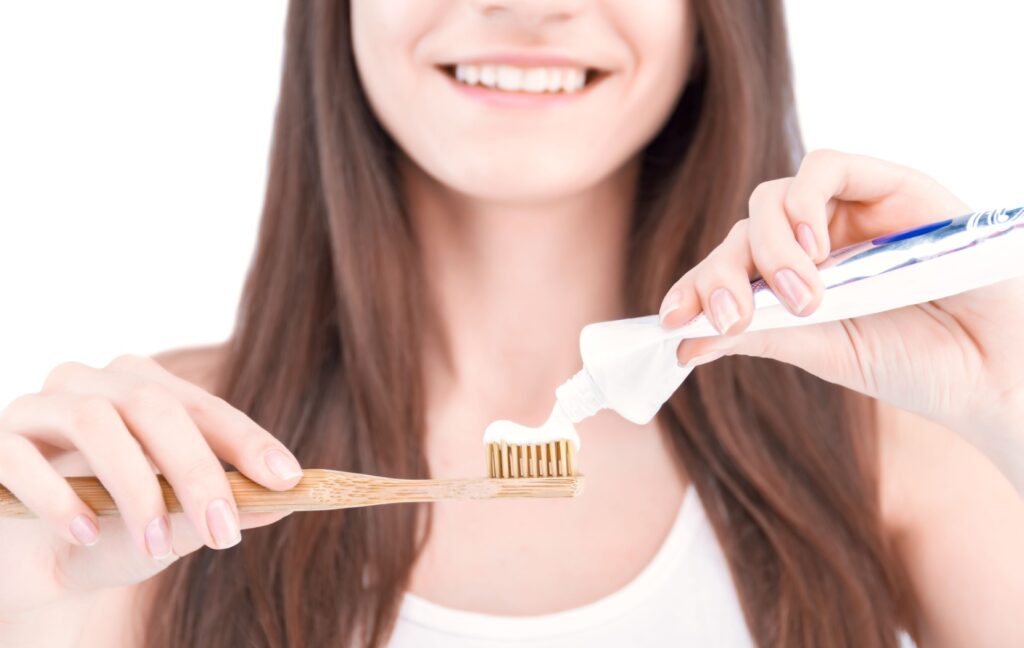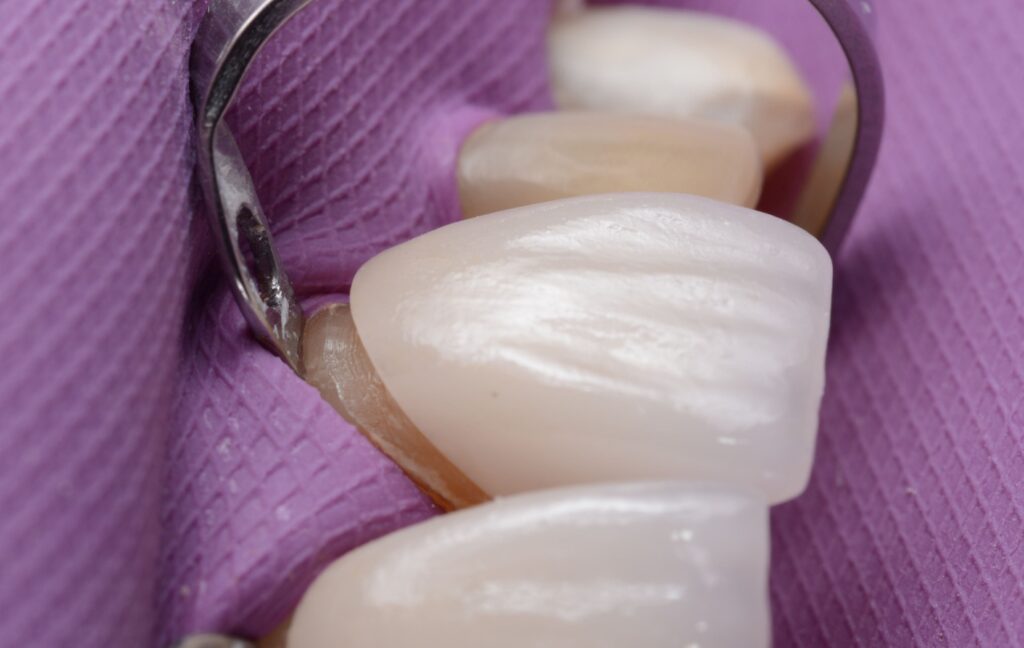Have you ever spent time thinking about how to get the perfect smile? If so, you may have heard of veneers as a potential solution for dental concerns like chipping and staining. But what happens to your natural teeth underneath veneers?
When veneers are applied, a thin layer of enamel is removed for proper bonding. The veneer then acts as a protective shield for the teeth underneath. However, regular oral hygiene remains crucial to prevent issues like decay in areas not covered by veneers.
What Are Veneers & Why Are They Popular?
Dental veneers are thin, custom-made shells that are bonded to the front surface of your teeth to improve their appearance. Veneers are typically made from durable porcelain or composite resin materials. Veneers are used to address several cosmetic issues, including discoloration, chipped or broken teeth, irregularly shaped teeth, or gaps between teeth.
Their popularity stems from their ability to provide a flawless and natural-looking smile. Veneers are known for their durability, stain resistance, and the aesthetic transformation they offer. But what happens to your natural teeth when you have veneers?
The Process of Getting Veneers
To understand how veneers affect your teeth, it’s useful to walk through how veneers are installed.
1. Initial Consultation
The veneer process starts with a consultation where your dentist evaluates your teeth and discusses your desired results. Digital scans, X-rays, or moulds may be used to determine the precise shape and size of your veneers.
2. Preparation of Your Teeth
This is the stage that most people wonder about. For veneers to bond properly, your dentist will need to remove a very thin layer of your enamel. This process, called enamel reduction, ensures that your veneers fit naturally and lie flush with your other teeth, creating a seamless appearance. The amount of enamel removed is minimal and does not affect the underlying structure of your teeth.
3. Impressions & Temporary Veneers
After your teeth are prepared, an impression or scan of your teeth is taken and sent to a lab to fabricate your custom veneers. Temporary veneers may be placed during this waiting period for the sake of comfort and aesthetics.
4. Bonding Process
Once your veneers are ready, your dentist will permanently bond them to your teeth using a strong adhesive resin. The veneer is carefully positioned and set using a curing light. The resulting chemical bond ensures the veneer remains securely attached to your tooth for years.
What Happens to Your Natural Teeth?
The question most people ask is whether veneers harm your underlying teeth. Here’s what happens to your teeth under your veneers.
Minimal Enamel Reduction
The removal of enamel is necessary to create a space for the veneer to adhere smoothly. While enamel does not regenerate, the amount removed is relatively small and limited to the front surface of your tooth.
Protection from Everyday Damage
When veneers are properly placed, they create a strong external shield for your teeth. This added layer can prevent wear and tear, protect against minor impacts, and help preserve your tooth from staining. However, this protection applies only to the area of the tooth covered by the veneer, not the back or sides.
No Impact on Tooth Roots & Structure
Contrary to popular belief, the structural integrity and roots of your tooth remain untouched. Veneers do not interfere with the pulp, nerves, or core functionality of your teeth.
Long-Term Stability
With proper care, veneers can last anywhere from 10 to 15 years or longer, which demonstrates their ability to provide long-term protection. However, it’s important to note that they don’t stop underlying issues like tooth decay entirely; regular oral hygiene remains essential.
Are There Any Risks?
While veneers are an excellent cosmetic solution, there are a few important risks to consider:
Potential for Increased Sensitivity
Because enamel reduction exposes the underlying layer of your tooth, you may experience temporary sensitivity to hot or cold foods and drinks. This sensation usually subsides shortly after the veneers are bonded.
Irreversibility
Once you get veneers, the enamel removal process ensures that your teeth will always require some form of coverage moving forward, whether through veneers or other restorative treatments.
Risk of Damage
While veneers are durable, they’re not indestructible. Activities like biting into hard objects or grinding your teeth can damage the veneer or even chip it. A night guard is often recommended for patients who grind their teeth while sleeping.
Caring for Veneers & Natural Teeth

To ensure your veneers last and your natural teeth remain healthy, follow these best practices:
Brush & Floss Regularly
Good oral hygiene ensures the health of your teeth and gums beneath your veneer. Brush twice daily with a non-abrasive toothpaste and floss gently.
Maintain Routine Dental Checkups
Visit your dentist at least twice a year for professional cleanings and to ensure your veneers and natural teeth remain in excellent condition.
Avoid Harmful Habits
Limit habits like nail-biting, ice chewing, or using your teeth to open packages. These activities can place unnecessary stress on both your veneers and your natural teeth.
Use Protective Gear
If you play sports or grind your teeth at night, invest in a good-quality mouthguard or night guard to protect your veneers and natural teeth.
Mind Your Diet
While porcelain veneers are stain-resistant, it’s still wise to limit foods and drinks that can stain, such as coffee, red wine, and dark berries, especially if you have composite resin veneers.
Your Next Step to Your Best Smile
A stunning, confident smile is within reach. Veneers allow you to enhance your teeth while protecting their core structure. At Arch Dental our skilled team of dentists specializes in veneers and smile transformations. Contact us today to book your consultation and take the first step towards your perfect smile.


